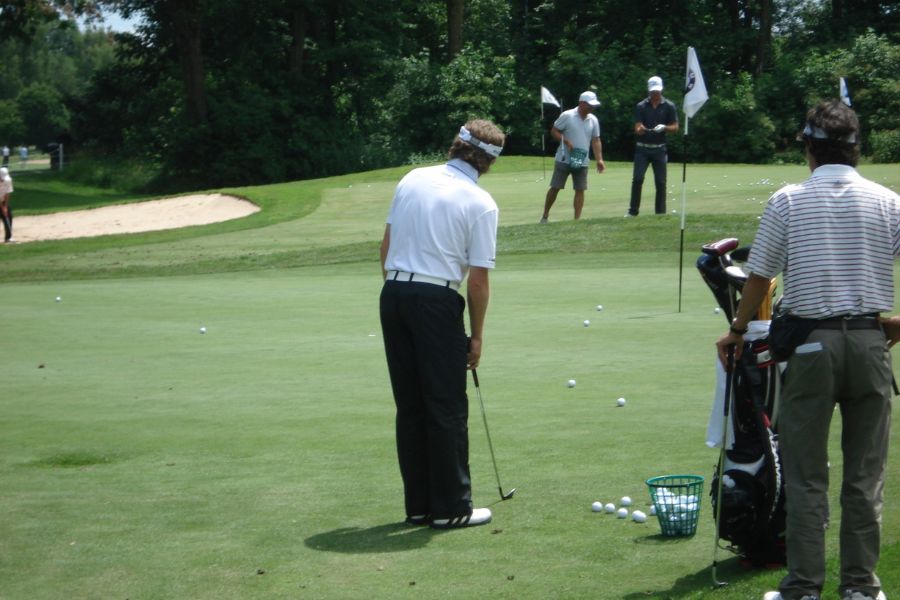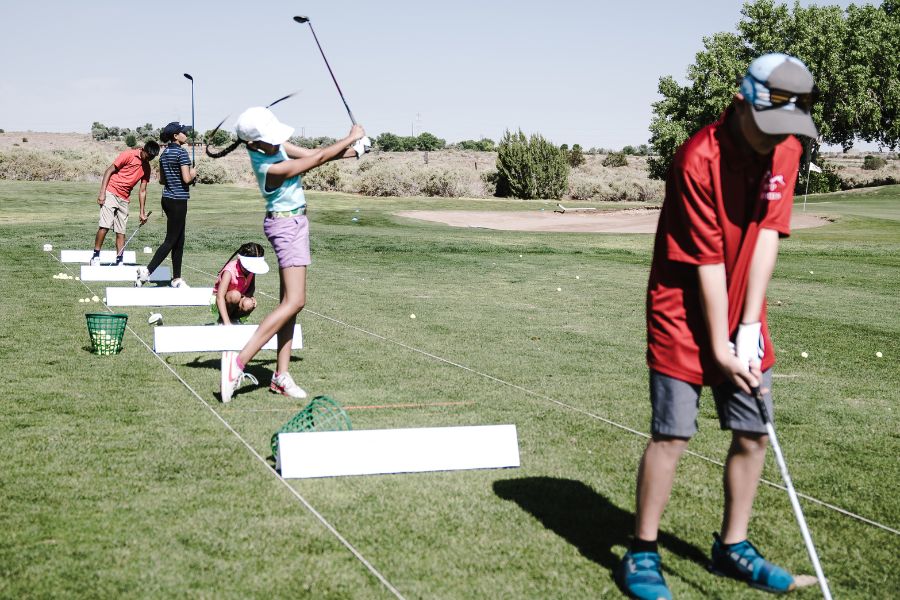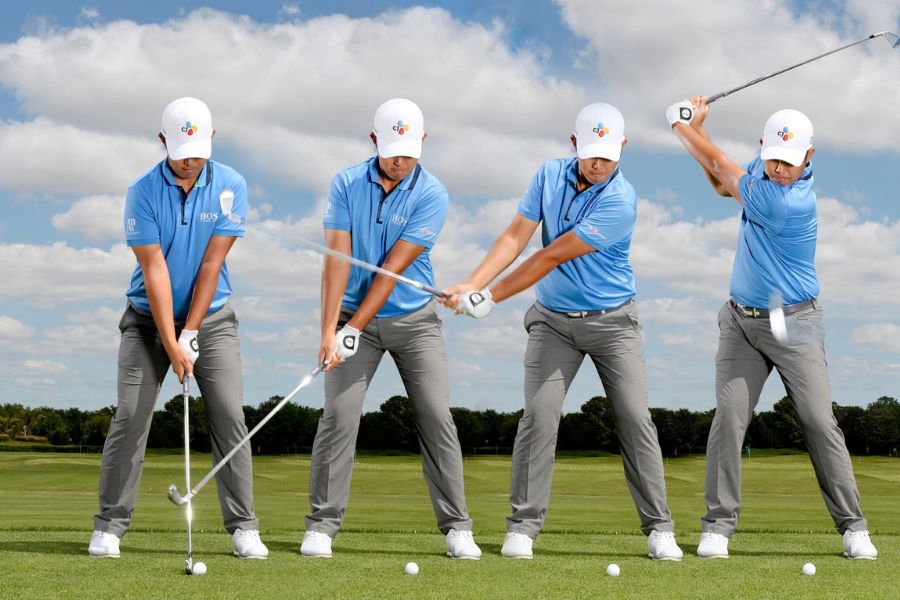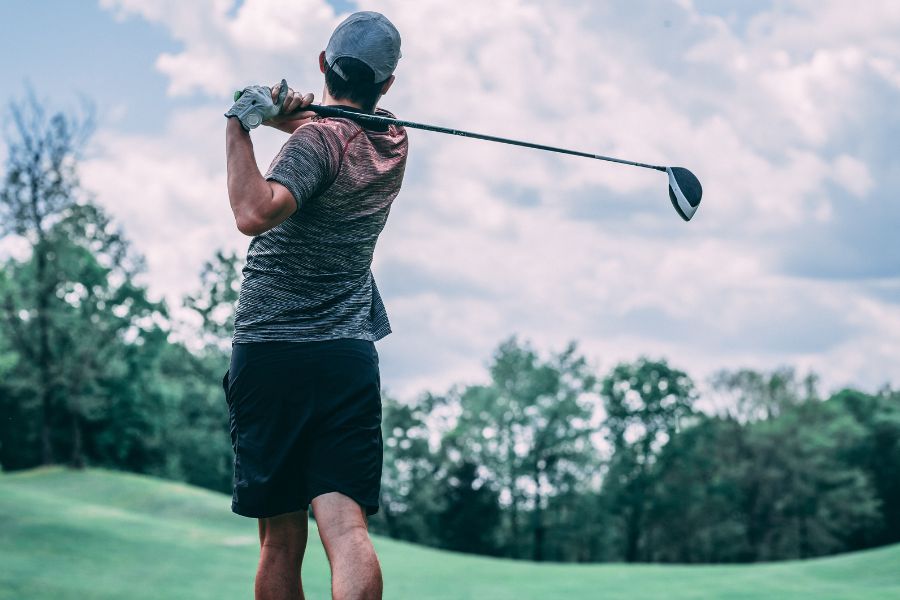When starting golf, beginners need to learn not only the basic techniques but also understand the regulations and rules of this sport. In the following article, let’s explore everything you need to know when beginning your golf journey to avoid confusion in the initial stages.
What are the different forms of golf practice for beginners?
Beginner golfers may find it challenging to determine the right form of practice. To help new golfers get acquainted with this green sport more easily, QP suggests four practice forms that newbies can consider and implement:

- Self-practice for beginners at home: This method helps save time and costs but requires golfers to ensure they have the space and training equipment at home. After studying the theory of golf through books and the internet, golfers can practice at home with the available equipment. However, this method is not highly regarded because golfers are at risk of injury or incorrect technique due to the lack of supervision and guidance.
- 3D golf room practice: Compared to home equipment, the 3D golf room is more convenient and equipped with modern devices. Especially, the advanced equipment here can help golfers monitor their swings, compare them with standard techniques for easy skill adjustment. In the 3D golf room, golfers can rent a coach or practice by themselves while learning from the experiences of other players.
- Golf academy practice with a coach: When participating in golf practice for beginners at academies, golfers not only receive structured training but also practice with experienced experts. The biggest advantage of this form is that golfers will have a coach guiding detailed golf techniques and correcting errors during practice. However, golfers need to invest time in carefully selecting reputable academies and coaches to avoid unnecessary expenses.
- Training on a real golf course: Undoubtedly, no practice method can provide the fantastic experience of playing on a real golf course. Golfers can choose to practice at a driving range or play on a large outdoor golf course with sand traps and water hazards. Large golf courses are suitable for both training and competitions, while smaller practice ranges are ideal for honing basic skills. The only drawback of this method is the relatively high cost.
Basic Techniques for Beginner Golfers

Basic techniques are not only necessary for beginners but also serve as a foundation for developing advanced skills in the future. Here are some fundamental techniques that golfers should master in the early stages of learning to play golf:
- Warm-up before playing golf: To warm up the muscle groups, tendons, and joints in preparation for playing golf, you can use any club from your set. Perform half to full swings to warm up the upper body muscle groups. Afterward, warm up the lower body by taking small steps or hopping in place for 5 minutes.
- Proper stance when playing golf: The correct stance significantly affects the quality of your swing. The standard golf stance is as follows:
- Stand with your feet shoulder-width apart, toes slightly turned outward to maintain balance.
- Slightly bend at the waist, with your eyes focused on the back of the ball for your backswing. Additionally, for each type of club in your set, you need to have the appropriate stance and ball placement.
- Proper grip when starting golf: The way you grip the club directly affects your swing. Golfers should learn the proper grip from the beginning to have better control of the ball and facilitate advanced skill development. There are several common grips in golf, including the interlocking grip, the 10-finger grip, and the Vardon overlap grip.
Key Swing Techniques
To master the basic swing technique, golfers should understand and practice the following movements:

- Takeaway: This is the action of lifting the club away from the ball to prepare for a swing. The clubface should be pointing straight up. Your shoulders and back need to work together to move the club up and exert pressure on your back and shoulders to ensure a stable shot.
- Backswing: From the takeaway, golfers should shift their weight to their leading foot, rotate their shoulders, and raise the club high. To achieve the most powerful swing, straighten your arms and extend them as far as possible from your body.
- Top of swing: After bringing the club close to the ball, golfers should turn their shoulders as much as possible in the direction of the shot to have the club positioned between the shoulders and ears. This step is crucial for preparing the downswing.
- Downswing: Move your trailing hand to have the club facing directly toward the ball, shift your weight to your non-dominant foot, then use your shoulders and back in harmony to strike the ball.
- Impact: When the club makes contact with the ball, your hips should turn toward the target, applying strong and precise force to hit the ball.
- Follow-through: After hitting the ball, golfers should rotate their bodies, extend their arms straight, and rotate across the torso while maintaining balance to avoid falling.
- Finish: A proper and elegant finish involves your waist pointing toward the target you just hit.
Putting Techniques for Beginners

Putting, the act of gently tapping the ball into the hole, might appear simple but can be quite challenging for newcomers. Here are some tips for achieving a standard and aesthetically pleasing putting technique:
- Place the ball slightly ahead in line with the inner edge of your left foot, and your putter should be aligned directly behind the ball.
- Hold the putter with your dominant hand, ensuring that the clubface is parallel to the target line.
- Maintain a proper, shoulder-width stance.
- Identify the golf hole, apply the right amount of force to guide the ball into the hole.
Important Notes for Beginner Golfers
In the initial stages of learning golf, mastering the fundamental techniques as mentioned above is crucial. Additionally, professional golf instructors recommend the following important tips:
- Diligently practice basic techniques, especially proper setup positions before striking the ball. Avoid excessive knee bending, leaning forward, or rounding your back, as these can affect your balance and ball path.
- Familiarize yourself with various types of golf clubs to find the one that suits you best.
- When playing golf, wait for the ball to stop rolling before taking the next shot.
- Consider combining two forms of training: playing golf outdoors and practicing in a net framework at home or in a 3D golf room.
- Continually learn and gain experience from professional coaches or experienced golfers.
These are some fundamental techniques and tips for golf beginners. We hope that after reading this article, you have a clearer understanding of the skills you need to develop. Be sure to follow QP’s articles to learn more about golf’s basic and advanced techniques in this noble sport.
